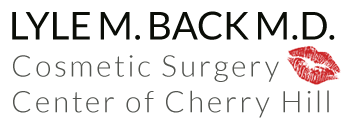Melasma – The “Mask Of Pregnancy” – Diagnosis And Treatment
Up to 75% of pregnant women have some form of hyper-pigmentation (an increased dark pigmentation of any area of the skin). Typically, it is mild and affects already pigmented areas such as the nipple/areola. The midline of the abdomen can also develop a dark line called the “linea nigra”. Melasma is the medical term for a hyperpigmentation condition also called “chloasma” and many know as the “mask of pregnancy”. It affects more than half of all pregnant women. Asian and Hispanic women have an increased risk for melasma. Melasma is identified as a light tan to dark brown pigmented discoloration of the central facial skin almost as if one were wearing a “lone ranger” style of mask. Melasma is not exclusively associated with pregnancy. It can also occur in women on oral contraceptives, in those receiving hormone replacement therapy, and in some medical conditions that involve abnormalities of hormone levels, such as menopause or Polycystic Ovary Syndrome. This is because melasma is directly linked to fluctuating higher than normal levels of estrogen and/or progesterone. Men can also get melasma but it is very uncommon – 90%+ of melasma cases occur in women. Thyroid disease and stress may also cause melasma as these conditions can lead to increased production of MSH (melanocyte stimulating hormone). Melanocytes are special cells in the skin that produce melanin – the pigment which is in produced in overabundance in melasma and other forms of hyperpigmentation.
Melasma is a special form of hyperpigmentation primarily affecting the central portion of the face; less commonly, the cheeks, the jawline and even the forearms may be involved. No one has ever determined why this unique distribution pattern occurs. The hyperpigmentation of melasma is microscopically characterized by a greater than usual number of melanocytes in the affected areas. These melanocytes are also carrying an abnormally high amount of dark melanin pigment (melanosomes) and have an increased number of connecting “bridges” (called “dendrites”) with which they can “inject” pigment into the surrounding skin cells and skin tissues. These cellular characteristics are somewhat unique to melasma and not seen to the same degree in other forms of hyperpigmentation such as post-inflammatory hyperpigmentation (a hyperpigmentation condition which can occur e.g. after laser treatments). The hyperpigmentation of melasma is also deeper in the skin tissue (more pigments are deposited in the deeper layers than in the superficial layers) than is seen with other kinds of pigment problems. Melasma is also associated with a general increase in capillary vascularity often lending an accompanying reddish hue to the affected area.
UV radiation is probably the most potent stimulator of melanin synthesis that there is. Properly protecting the face and judicious use of sunblock are extremely important if there is the slightest suggestion of the appearance of melasma.
In the 6 – 12 months following labor and delivery or with the stopping of any supplemental hormones, melasma most often disappears on its own. Once again, sunblock use during this time is critical. UV radiation perpetuates the stimulation of melanocyte activity and melanin production. This may turn some or all of the pigmentations darker and possibly permanent.
Treatment for melasma that does not show signs of regressing spontaneously involves some basic concepts. Again, the most important of these is sunblock use and the avoiding of tanning rays. Consistent and regular use of a reliable high quality sunblock, wearing a UV blocking hat, and using an umbrella when at the beach are all good strategies.
Consult with your physician expert in cosmetic skin care to develop a cohesive treatment plan. Topical anti-inflammatory agents (e.g. steroids) can help – minimizing any existing inflammation and irritation is key to a quicker and more definitive resolution. Minimizing any inflammation or irritation to the skin in general is similarly wise. Gentle washing, and stopping the use of any skin care products or fragrances that are irritating is helpful. Azeleic acid, lactic acid, vitamin c, retinoids and steroids have all been used with success in treating melasma, usually in combination therapy. Hydroquinone has also been very successful, but there are growing concerns about absorption, carcinogenicity, and side effects. Any therapy which produces too much irritation may be counterproductive; this is often also a potential problem with hydroquinone, and with the retinoids as well.
Dr. Lyle Back is originally from New York City, receiving his medical and surgical training at Rutgers Medical School, Cooper Hospital – University Medical Center, and Ohio State. He is Board Certified in General Surgery (ABS) and Plastic Surgery (ABPS). He is a Fellow of the American College of Surgeons, the American Academy of Cosmetic Surgery, and a longstanding member of the premier American Society of Plastic Surgeons. He specializes in the full range of the most modern and state of the art facial cosmetic surgery procedures and non-surgical cosmetic enhancement techniques available today.
